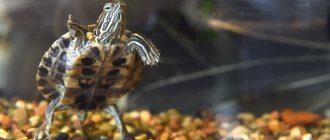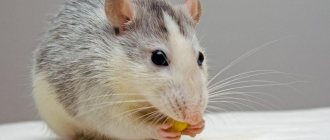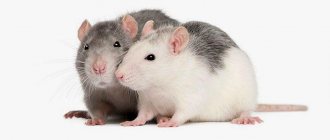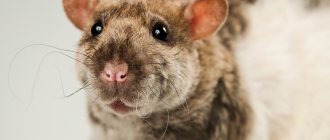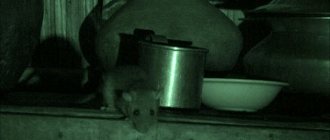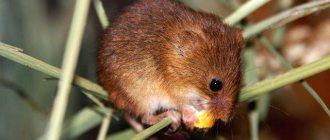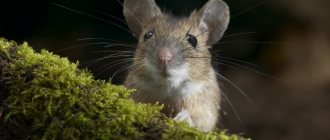For a long time, rats were a sign of unsanitary conditions and frightened humanity, becoming a harbinger of illness or hunger.
They were considered pests until charming ornamental animals appeared, which in intelligence and sociability can compete with the usual cats and dogs. When planning to get a rodent, it is important to understand the difference between rats, mice, and hamsters in order to provide the animal with the most proper care and living conditions.
General characteristics of the animal
Depending on the species, the length of a rat’s body can range from 8 to 30 cm. A distinctive feature is a long tail, sometimes exceeding the length of the body. The weight of the animal ranges from 37-400 g. Particularly large individuals of gray rats can reach a weight of 0.5 kg.
Classic shades of wool are gray and brown, although yellow and orange colors are also found. The main types of wild rats are gray and black, widespread everywhere. The rest of the rodents live in a strictly defined area.
The following breeds are best suited for home keeping:
- standard - large animals with a long tail and smooth fur;
- satin - the animals are covered with a thin six, curling blue;
- Dumbo - funny animals with a wide head, pear-shaped body and large round ears;
- Sphynx - hairless rats with pink shiny fur;
- tailless - a distinctive feature is the complete absence of a tail.
Skeletal structure
The rat skeleton contains 265–285 bones. This is one of the main differences between these rodents and other mammals, which have a strictly defined number of constituent elements. The number of bones in a rat varies due to the lumbar region and the tail, which can number from 25 to 30 vertebrae and account for 13% of the total body weight.
Important! A rat's incisors grow continuously, so they constantly need to chew something. If the animal does not have the opportunity to grind down its teeth, they grow so large that the mouth cannot close and cause significant discomfort.
The second distinctive feature of the rat skeleton is its well-developed skull. By weight it accounts for the largest percentage. Together with the lower jaw, it makes up 15% of the total weight. All parts of the skull are very well developed, especially the brain. A rat has quite a lot of gray matter, as for a rodent. The configuration of the skull and the presence of a large number of different processes make it possible to attach strong chewing muscles to it. In total, the rat has 4 incisors and 12 molars. But the bite force is so great that the rodent is able to withstand a fight with an animal much larger than it in size.
The next feature is the peculiar structure of the cervical spine. Like other mammals, it is composed of 7 elements. But they are articulated in such a way that they provide greater mobility of the neck and head.
Among other distinctive features of the skeleton, significant development of the hind limb girdle is noted. It accounts for 12% of the total mass, which is more than 2 times the weight of the front paws. This structure determines good adaptability to jumping activity. Although the rat uses different types of movements when moving, this is what allows it to gallop.
Did you know? It takes only 2 seconds for a male rat to impregnate a female.
The highly developed girdle of the hind limbs also causes concussion of a number of vital organs; therefore, in the thoracic region there is a spinous process, from which the tendon triangle extends. It is this area, as well as the special articulation of the vertebrae of the neck, that contributes to shock absorption during jumps and protects organs from damage. The skeletal structure of a mouse and a rat is different. The babies of the second rodent may look identical to the adult of the first. The main difference is the difference in dimensions.
The rat is longer, has a larger skull and a long tail. There is also a significant difference in the development of the motor system. The mouse practically does not jump.
Rat face
The muzzle area includes:
- nose;
- eye sockets;
- mouth;
- cheeks;
- chewing area.
The oral slit is located on the anterior and lateral edges of the muzzle. The nostrils are placed at the top of the nose close to each other. A vertical groove begins just below the nose, allowing the upper incisors to be exposed even if the rodent keeps its mouth closed.
There are vibrissae near the tip of the nose. Organs of touch that help the animal navigate and evaluate objects along the way. The eyes are set deep and protected by movable eyelids. Rodents are also characterized by the presence of a third eyelid - a nictitating membrane, and a red glow in the eyes.
How many teeth does a rat have
A specific dental system is a distinctive feature of wild and ornamental rodents.
The total number of teeth is 16, of which 12 are chewing molars and 2 pairs of elongated incisors in the central part of the jaw. There is a significant gap between them and the molars. The purpose of the incisors is to bite. Sharp and strong, they allow the animal to feed not only on grain, but also on insects, as well as smaller animals. Because of this, the wild rat often acts as a predator. Also, the special strength of these pairs of teeth allows rodents to cope with wood, concrete and steel wire.
Rat incisors are constantly growing, so they need regular sharpening. When keeping ornamental animals, it is necessary to provide them with special devices, otherwise the animal may suffer from overgrown teeth. Enamel is present only on the front surface of the incisors. The back is covered with dentin, a softer substance that wears out quickly.
Molars are equipped with cusps or ridges for successful chewing of food. In adults they are erased. The enamel is preserved only on the sides; the middle is also covered with dentin.
Rat anatomy: location of internal organs
Since, as we have already said, rats belong to the category of mammals, the arrangement of their organs is not much different from their relatives in biological species. In the picture below you can see all the organs in cross-section:
1 - aorta; 2 - heart; 3 - light; 4 - diaphragm; 5 - spleen; 6 - ovary; 7 - kidney; 8 - oviduct; 9 - bladder; 10 - cecum; 11 - pancreas; 12 - stomach; 13 - liver.
And here is a detailed diagram of the circulatory system of a rat:
1 - atria; 2 - ventricles; 3 - left aortic arch; 4 - innominate artery; 5 - left subclavian artery; 6 - right subclavian artery; 7 - carotid arteries; 8 - dorsal aorta; 9 - splanchnic artery; 10 - anterior mesenteric artery; 11 - renal artery; 12 - posterior mesenteric artery; 13 - genital artery; 14 - iliac artery; 15 - caudal artery; 16 - anterior vena cava; 17 - jugular veins; 18 - subclavian veins; 19 - tail vein; 20 - iliac vein; 21 - mesenteric vein; 22 - portal system of the liver; 23 - hepatic vein; 24 - posterior vena cava; 25 - pulmonary artery; 26 - pulmonary vein; 27 - azygos vein.
And we will dwell on the interesting features of their physiology.
For example, did you know that these animals have a navel, but do not have a gallbladder or tonsils? And at the beginning of the large intestine there is an appendix, which an inexperienced veterinarian can easily confuse with a benign tumor: it is so large and unusual in its structure.
Another interesting fact: these animals have poor eyesight. The rat sees space at an angle of only 16°, and it sees the world around it in gray tones. If she can still distinguish between blue and green shades, then for her the red color is darkness. Surprising, wouldn't you agree?
But poor eyesight is compensated by an excellent sense of smell and touch: mainly with their help they perceive everything around them.
Rat body temperature
Normally, the body temperature of a decorative rat is 38.5-39.5 degrees. A slight increase may suggest stress, heat stroke, or the initial stages of an infection. A temperature of 40.5 degrees is a signal to urgently go to the clinic, but it must be brought down immediately. This is done by using ice packs or rubbing small pieces of ice on the ears.
A drop in temperature is much more dangerous and indicates an advanced infectious disease or shock. In this case, it is necessary to lift it with heating pads, and then immediately take the pet to the veterinarian.
Interesting facts from physiology
Veterinarians and biologists, studying the anatomical and physiological structure of the rat, noted a number of interesting facts:
- numerous laboratory studies on rodents are explained by the similarities in physiology between rats and humans;
- the animals lack tonsils and thumbs;
- males have tissue for the formation of mammary glands, but there are no nipples even in their infancy;
- females have a vestigial penis that can be used for urination;
- In rats, the right and left lungs have different structures. The first has 4 beats, and the second has only one;
- rodents have an appendix, which is sometimes confused with a frolicking internal tumor;
- unlike humans and cats, albino rats do not suffer from hearing problems;
- ultrasonic exposure causes discomfort to rodents, but they can easily tolerate it;
- Rodents do not have lips around their mouths. Instead, a folded gap is formed above the lower jaw;
- The male spends 2 seconds on fertilization, so keeping different-sex individuals in the same cage guarantees the presence of offspring.
Important! The pain threshold of rodents is very high; the animal gives a signal about the presence of pain only with extremely severe symptoms. This leads to frequent late diagnosis of serious pathologies, so pet owners should not neglect preventive examinations of their pets.
Rat paws
The rat's front legs include:
- armpits;
- shoulder;
- elbow;
- forearm;
- brush.
The hind legs of a rat are divided into:
- hip;
- shin;
- heel area;
- tarsal area;
- metatarsus
Rat. Part 1, anatomical
Rats, like cats, can “stretch.” But the reason is somewhat different - in rats the spine is actually a couple of vertebrae longer. And the legs are shorter relative to the body, which is why the rat initially looks elongated.
The odontoid process of the second cervical vertebra (axial) has a conical shape. This allows the first vertebra (atlas) to rotate not only about the axis, but also in other directions. This skeletal feature provides rats with exceptional head mobility, which allows them to defeat even larger opponents.
Thanks to its powerful hind legs, the rat can jump up to a meter in height. The front legs are much smaller. To cushion them when jumping, rats have a structural feature: on the spinous process of the second thoracic vertebra there is a joint connecting it with a triangular bone plate directed forward. From below, tendon cords are attached to this plate, extending to the first thoracic and four posterior cervical vertebrae. When landing, this “structure” springs and absorbs the impact. Nutria has the same feature.
Rats have a visual angle of 160′ and are nearsighted. A rat can see clearly no further than a meter, so if you stand quietly in the opposite corner of the room and don’t move, you don’t exist for the rat. The animal does not see in the red spectrum, but distinguishes ultraviolet light; in general, the world for a rat is gray-blue-green, like for a dog.
Related article: Domestic rat makes strange noises, what do they mean?
How can one live with such vision? That's how. The rat constantly turns its head, and its eyes move independently of each other, and they always move in the opposite direction relative to the head: if the rat lowers its head, the eyes look towards the tail, when the rat raises its head, the eyes become “in a bunch”, when tilts his head - the lower eye looks up, and the upper eye looks down. The difference in the direction of the eyes is up to 40′ in the horizontal plane and up to 60′ in the vertical. Thus, the rat sees the surrounding space in fragments.
Rats have a unique hearing; they hear the slightest rustle, as well as ultrasound. But they do not distinguish pure tones. A rat may not hear a wailing siren, and ultrasonic rodent repellers do not work on them because their sound is quite acceptable to rats.
Rat noses have twice as many olfactory receptors as humans, and they smell through each nostril separately. In just fifty milliseconds, the source of the odor is identified and analyzed.
Rats make whistles in the ultrasonic range. Moreover, they whistle not with their lips, but with their throats and are able to suddenly change the frequency of the signals. Rats have a rich “vocabulary” of screams with special intonations and meanings. Scientists have found that rats are even capable of laughing: when “laughing,” the rat emits a series of identical ultrasounds.
Rats are the only living creatures that can sense X-rays. At the same time, they can withstand very high levels of radiation.
The tail is almost equal in length to the body, it is covered with fine bristles and scales, the tail is rough and hard to the touch. The tail has two functions - thermoregulation and balancing. Tendons run along the tail, thanks to them the rat can cling to its tail.
When a predator attacks a rat and grabs it by the tail, the skin is removed, exposing the spine bone. Over time, the bone dries out and falls off, after which the rat continues to live with the “stub.” A tailless rat, as a rule, does not live long. So do not grab or lift your pet rats by their tails, they may come off!))
Article on the topic: Neapolitan Mastiff - description of the breed, care, maintenance, education, photos.
The second part will be devoted to the “service” of the rat to man
How to find a rodent nest by following their tracks
Mouse nest.
Following the route, you can find the nest. The traces of the pasyuks are clearer, but the distance between them is greater. They press their paws harder. Wood mice and voles have less clear markings and are closer together.
The places where the nests are located are covered with fallen leaves or rubbish. The entrance diameter is up to 5 cm. It is easy to check whether rodents live there. You need to roll up the newspaper and place it in the hole. Having pulled out the crumpled and splashed paper a day later, it becomes clear that there are inhabitants inside and it is necessary to take measures to destroy it.

